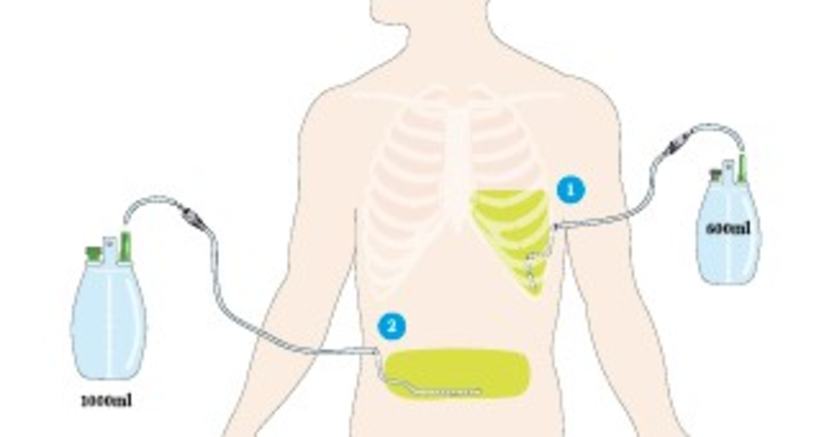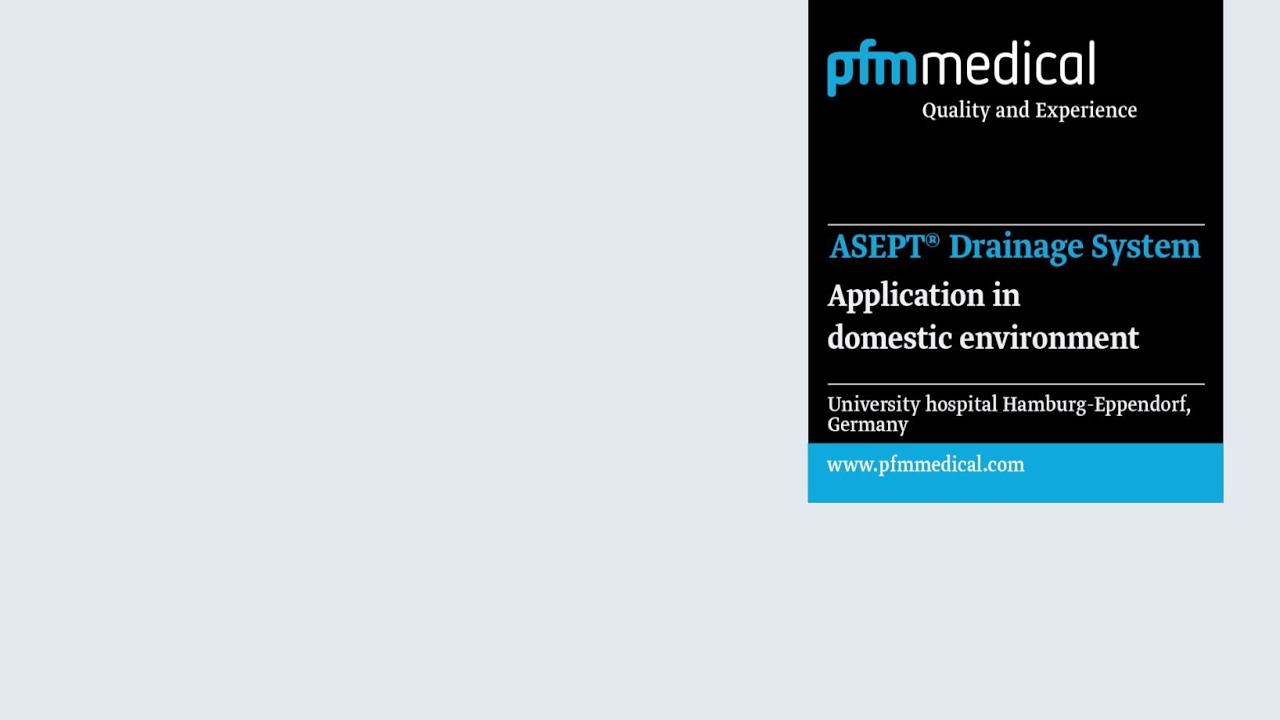Permanent Drainage of Pleural Effusion or Ascites
Repeated pleural effusions or ascites can be treated in an outpatient setting with a permamente drainage using the ASEPT® System. A tunnelled permanent drainage catheter is implanted in the pleural cavity (pleural effusion) or in the peritoneal cavity (ascites). The implantation of the catheter can be carried out as an inpatient or outpatient. It only takes a few minutes and is performed under local anaesthetic. After an appropriate observation period the patient can then return home.
The actual drainage treatment is carried out at home. Circumstantial punctures in the hospital or the Doctor’s practice are no longer necessary. This is made possible by vacuum bottles that are connected to the catheter via a rotary joint in order to collect the effusion fluid. Symptoms such as shortness of breath or a feeling of pressure become weaker. After the drainage, which lasts
only a few minutes, the bottle can be removed and disposed of.

Draining the Effusion Fluid
The drainage of the effusion is normally carried out by a District Nurse, however it may be possible to teach the patient or a family member how to perform the drainage. Education and training will be provided on how to carry out the drainage, and ongoing support will be available.
The patient's Doctor will specify how often the effusion should be drained. Usually, it is every 1 to 2 days. Patients or famliy members should keep a diary of the drained amount as it can decrease or even completely run dry. In this case the catheter can be removed entirely.


